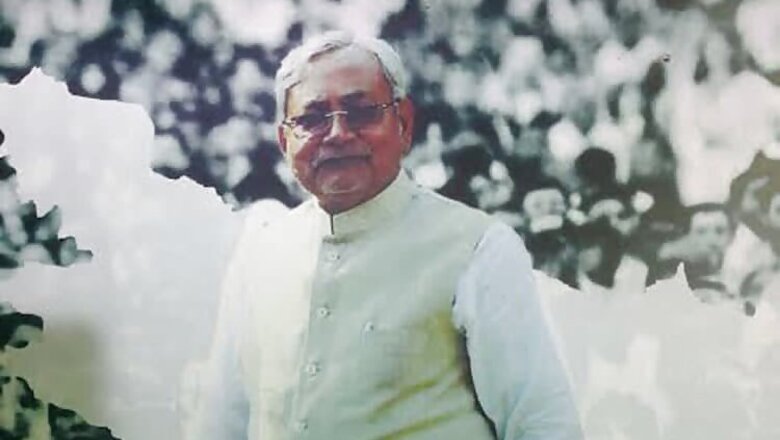
views
Nitish Kumar and Lalu Prasad, a formidable tag team, proved that Bharatiya Janata Party-led National Democratic Alliance (NDA) is not an invincible force and the so-called Narendra Modi wave can be easily countered by a carefully crafted social coalition along with a well synchronised and effective campaign.
Together the two, who buried over 20 years of rivalry to take on a common rival in Prime Minister Modi, knocked out the NDA in Bihar Assembly Elections. The Janata Dal United-Rashtriya Janata Dal-Congress Mahagathbandhan won an impressive 178 seats to decimate the NDA which ended with a paltry 58 while independents and smaller parties won the remaining seven in the 243-member Bihar Assembly.
Lalu’s RJD, which had the biggest vote share in the Mahagathbandhan at 18.4%, emerged the single largest party with 80 seats followed by JDU at 71 (vote share 16.8%) and the Congress at 27 (6.7 % of votes). The alliance with JDU and RJD paid rich dividends to the Congress and the party came up with its best show in Bihar in over two decades.
But it was all gloom in the NDA camp. Neither the BJP nor its three allies – Lok Janshakti Party, Rashtriya Lok Samata Party and Hindustani Awam Morcha (Secular) – managed to put up a fight as the Nitish-Lalu team steamrolled over them across all the regions of Bihar.
In the Anga region the Mahagathbandhan won 20 of the 23 seats, in Magadh it was 38 out of 50 while Bhojpur, considered to be a BJP bastion, saw the JDU-RJD-Congress combine bagging 40 of the 54 seats.
Another supposedly BJP strongholds of Tirhut and Champaran, too, fell as the Nitish-Lalu team marched on although it was the only region where there was semblance of some fight with the Mahagathbandhan winning 27 of the 51 seats. Mithila and Seemachal regions were no better for the NDA as the Mahagathbandhan won 37 and 16 seats out of 42 and 23 respectively.
It was certainly a debacle way beyond the wildest dreams of the NDA leaders who were already celebrating when some channels erroneously called the election in their favour when just a few leads had trickled in at around 9 AM. But as the Mahagathbandhan picked up momentum, the NDA was left way behind and finally ended with a figure that made a mockery of its high-decibel and expensive campaign.
In April-May 2014 it was a Modi-powered NDA sweep in Bihar with the alliance winning 31 out of the 40 Lok Sabha and leading in 173 Assembly segments. The opposition was divided and easily trampled.
But Bihar in the October-November 2015 is a completely different story. The Assembly election verdict is so resounding and profound in favour of the Mahagathbandhan that it has left the NDA clueless and several political pundits scratching their heads.
The election campaign was highly divisive, vitriolic and abusive but the man who kept his cool among all this was the one who was the central figure in the battle. Nitish Kumar, who will take oath as Bihar Chief Minister for the fifth time, kept his campaign focused on his development track record and his seven promises popularised as “Nitish Nischay” even as Lalu wrestled with the NDA to rally the backward castes around the Mahagathbandhan.
His strong Yadav-Muslim vote bank was extremely aggressive and together with Nitish Kumar’s development plank, which cut across the caste divide, created a strong combination that NDA failed to match. Youngsters and women whom Nitish has assiduously cultivated gave the Mahagathbandhan a massive edge.
A few blunders from the NDA camp only made it easy for Nitish and Lalu. The biggest of them was Rashtriya Swayamsewak Sangh chief Mohan Bhagwat’s September 20 comment calling for a rethink on reservation for other backward castes, scheduled castes and scheduled tribes which was latched on by the Mahagathbandhan.
BJP’s decision to ally with former Bihar CM Jitan Ram Manjhi was another. Manjhi contested from two seats, won one and his HAM failed to be in the race in the other 19 it contested.
Similar was the case with Ram Vilas Paswan’s LJP and Upndra Kushwaha’s RLSP. Both Paswan and Kushwaha were highly ambitious and their parties contested in a far greater number of seats than their strength. It proved to be an unmitigated disaster. Both LJP and RLSP won two seats each out of the 42 and 23 they fought on respectively. It was downhill for the BJP too as the party won only 53 of 157 seats that it contested.
Not projecting a CM candidate, Modi’s DNA barb at Nitish and “jungle raj” pot shot at Lalu, allies at loggerheads, lack of a campaign strategy, attempts to communally polarise the electorate backfired for the NDA.
While Nitish used the DNA comment to tie up the NDA in knots and created a feeling of sub nationalism among the youth, Lalu used the “jungle raj” attack to rally around the OBCs particularly the Yadavs, who saw the elections as the best chance to get back to power.
Mahagathbandhan’s flawless exercise in deciding the candidates and declaring 242 names except the Rajgir seat (its nominee was still in government service) at one go from Patna sent a clear cut message to the cadre and voters that it was standing united. NDA saw several acrimonious rounds of seat sharing talks and a lot of infighting among the allies resulting in several rebel candidates.
The statements by two BJP MPs – Shatrughan Sinha and RK Singh – about tickets being given to undeserving candidates with criminal records, too, led to a lot of commotion.
As electioneering progressed it became clear that vote transfer was a taking place effortlessly in the Mahagathbandhan while some NDA partners didn’t even have their own vote banks.












Comments
0 comment